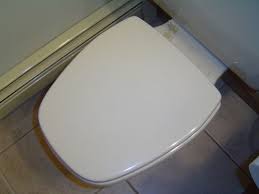The Ubiquitous and Often Poorly Understood Toilet
By Mark J. Donovan
|
|
A toilet is one of the greatest inventions every conceived. It modernized our homes by allowing the backyard privy to be brought into the house, without all of the negatives that are associated with an outhouse. A toilet works due to 6 major components and a mechanism known as siphon action.
The 6 major parts that are instrumental in how a toilet works include the toilet bowl, toilet tank, toilet fill valve, toilet flush valve, float, overflow tube and handle. The toilet bowl is specially designed to hold water in the base of it. In addition, it has the ability to accept water in from the tank via the rim and a siphon jet hole located at the base of the toilet bowl. |
Finally, at the heart of the toilet is the siphon tube. The siphon tube, as the name implies, is a tube shaped unit integrated into the rear of the porcelain toilet bowl that serves two purposes. First it acts as a trap such that no sewage gasses can leak up into the home.
Secondly, and more importantly, it acts as the mechanism for drawing water and waste products out of the toilet bowl base.
| The siphon tube is actually a very interesting invention. If for example, you repeatedly pour individual cups of water into the toilet tank you will notice that the water level does not rise. If however you pour a bucket of water into the toilet bowl rapidly, you will notice that the water level in the bowl will initially rise but then be drawn down dramatically, to a point where there is practically no water left in the toilet bowl.
This phenomenon occurs due to the siphon action. When you pour a large volume of water into the toilet bowl it causes the water in the siphon tube to rise and spill over into the sewage pipe. Then due to the principles of a siphon, the water is automatically and rapidly drained from the toilet bowl into the sewage pipe. |
 |
The toilet tank acts as the reservoir for holding a large volume of water. In addition, the base of the toilet tank has a large hole in it.
Once the toilet tank has been emptied of water, the flapper falls back down onto the toilet tank hole to seal it. The toilet tank filler valve then begins to refill the toilet tank. In addition, it feeds water into the overflow tube to refill the base of the toilet.
| When the toilet tank is momentarily empty, a float unit will sit near the bottom of the tank. As water fills up the tank the float unit will rise with the water level. Once the float has reached a predetermined height, the float which is commonly connected to a rod, will turn a switch off in the filler valve assembly to prevent any additional water from flowing into the toilet tank.
So the next time you flush a toilet, think about all of the operations that are simultaneously occurring. The toilet is a pretty ingenious invention and has played a major role in improving our health and making our lives more comfortable. |
|
For information on installing a shower pan membrane liner for a ceramic tile shower, see the Shower Pan Membrane Liner Installation eBook from HomeAdditionPlus.com. The Shower Pan Membrane Liner EBook will quickly teach you the step-by-step process for installing the shower pan membrane liner correctly. It includes instructions on framing the shower stall, pouring the pre-slope and shower base mortar, and installing the shower pan membrane liner.
For information on how to tile a custom ceramic tile shower, see the “How to Tile a Custom Ceramic Tile Shower eBook” from HomeAdditionPlus.com. This eBook will quickly provide you with step-by-step instructions on how to measure and install ceramic tile in a shower, including the installation of tile on shower walls, floors and curbs. It provides detailed instructions for every step in the process of tiling a custom ceramic tile shower and is loaded with instructional pictures!
Related Information
- How to Replace a Toilet Tank Lever Video
- How to Install Toilet Bolt Snap-On Covers Video
- How to Install a Toilet Tank Fill Valve Video
Additional Plumbing Resources from Amazon.com
 |
 |
Get Free Bathroom Remodeling Price Quotes with No Obligation!
Fill out our 3-5 minute quick and easy form, and receive a free price quote on a bathroom remodeling project from one of our pre-screened and licensed bathroom remodeling contractors. This process is free and there is no obligation to continue once you receive your bathroom addition price estimate.

